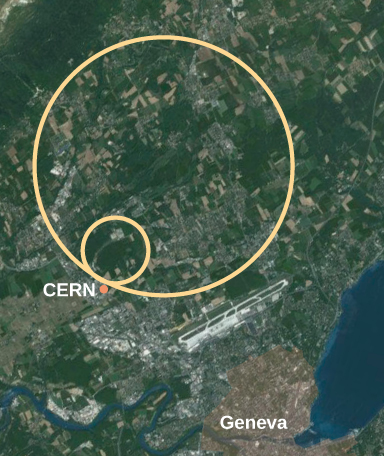| << Chapter < Page | Chapter >> Page > |
Is there any point in getting v a little closer to c than 99.0% or 99.9%? The answer is yes. We learn a great deal by doing this. The energy that goes into a high-velocity mass can be converted into any other form, including into entirely new particles. In the Large Hadron Collider in [link] , charged particles are accelerated before entering the ring-like structure. There, two beams of particles are accelerated to their final speed of about 99.7% the speed of light in opposite directions, and made to collide, producing totally new species of particles. Most of what we know about the substructure of matter and the collection of exotic short-lived particles in nature has been learned this way. Patterns in the characteristics of these previously unknown particles hint at a basic substructure for all matter. These particles and some of their characteristics will be discussed in a later chapter on particle physics.

The expression for kinetic energy can be rearranged to:
Einstein argued in a separate article, also later published in 1905, that if the energy of a particle changes by its mass changes by Abundant experimental evidence since then confirms that corresponds to the energy that the particle of mass m has when at rest. For example, when a neutral pion of mass m at rest decays into two photons, the photons have zero mass but are observed to have total energy corresponding to for the pion. Similarly, when a particle of mass m decays into two or more particles with smaller total mass, the observed kinetic energy imparted to the products of the decay corresponds to the decrease in mass. Thus, E is the total relativistic energy of the particle, and is its rest energy.

Notification Switch
Would you like to follow the 'University physics volume 3' conversation and receive update notifications?